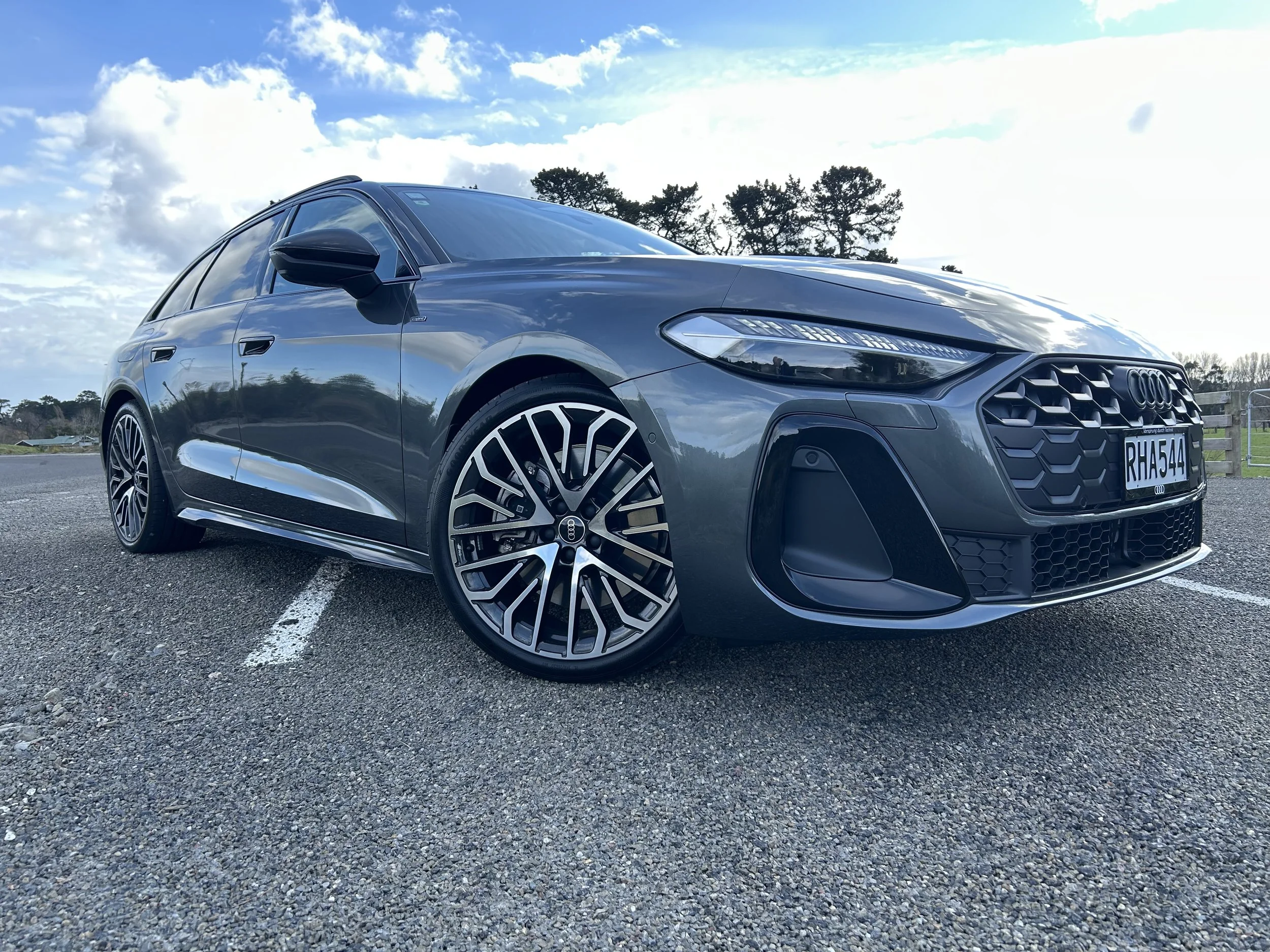Twin test - Kia Seltos LX, Limited Turbo: The price of power
/Comparing the entry and top versions of Kia’s compact crossover provides reminder about the depth of its core talent.
Seltos LX (above) hasn’t the full suite of technology availed to the Limited Turbo (below) yet, though a little undercooked in some aspects, nonetheless presents strongly for value and competence.
Prices: LX $27,990, Limited Turbo $46,990.
Powertrains and performance: LX: 2.0-litre four cylinder petrol, 110kW at 6200rpm, 180Nm at 4500rpm, constantly variable automatic, 6.8L/100km, 157g/km CO2. Limited Turbo: 1.6-litre four cylinder turbocharged petrol, 130kW at 6000rpm, 265Nm at 1500-4500rpm, 7-speed dual clutch automatic, 7.6L/100km, 175g/km CO2.
Vital statistics: Length 4370mm, width 18000mm, height 1615mm with roof rails, wheelbase 2630mm. Cargo 468/1428 litres (LX), 433/1393 litres (Limited Turbo).
We like: Good looks, plenty of interior room, LX value for money, Turbo cheerful performance.
We don’t like: LX price point lowers safety specification, Limited Turbo transmission can get confused.
AN old saying about twins: Two unique souls united by birth.
It’s of relevance with Kia’s compact SUV, the Seltos. There’s the front-drive LX that represents as the entry choice. And, at the top of the family, there’s the all-wheel drive Limited Turbo which costs a whopping $19,000 more.
And yet both these variants of the Seltos share the same body – in fact, if you lined them up alongside each other and squinted, it would be impossible to differentiate between the two. But the two models are way different, nonetheless.
Of course this sort of thing happens all the time. Obviously all vehicle model ranges have to begin with an entry model, and they invariably top out with either a highly specified or performance-oriented version.
There are two differences with the Seltos range, though. The first is that the entry LX presents as an outstanding value package for the money even though it does lack in some important areas. The second is that the Limited Turbo offers both specification and performance – it has a different engine and transmission, different running gear and suspension, and a much higher level of standard spec.
Little wonder then that Seltos is currently New Zealand’s biggest-selling small SUV, with 1437 registrations to the end of July, well ahead of its nearest competitors Mitsubishi ASX, Hyundai Kona, Honda HR-V and Suzuki Vitara.
But in the case of the LX, in some respects you do – or should that be don’t – get what you pay for.
What you don’t get is the full suite of safety features that is otherwise standard on every other member of the Seltos range, including an LX+ model that Kia New Zealand has cleverly included which carries an $8000 price premium over the LX.
What the LX doesn’t have, which the LX+ does, includes blind spot detection, rear cross-traffic alert, front parking sensors, and electronic park brake. Not only that, but the LX’ camera-based autonomous emergency braking system (AEB) is designed to recognise cars and pedestrians only, while the rest of the Seltos range’s radar-based AEB also recognises cyclists.
Despite this, the LX has received a five-star ANCAP safety rating, although the organisation does warn that it is important consumers are aware that there are some differences in safety performance for the entry level Seltos.
“Base models of the Seltos miss out on some of the more advanced features available with the radar-fusion AEB system, and we would encourage consumers to purchase a variant which offers the advanced collision avoidance capability as this can translate to real differences on the road,” it says.
Truth be told, at this time safety features such as blind spot detection, rear-cross traffic alert and cyclist detection should be the preserve of the more expensive higher-specified vehicles, not product that retails for less than $28,000.
And despite its price, the LX still carries good specification that includes lane keep assist, ABS brakes with all the goodies, hill start assist, high beam assist, a reversing camera, tyre pressure monitor, and even a driver attention alert that judges when the person behind the wheel is losing concentration and sounds a warning.
Powering the LX is a 2.0-litre Atkinson Cycle four cylinder engine mated to an intelligent continuously variable automatic that Kia calls iVT.
Atkinson Cycle engines, which up until now we have mainly seen in hybrid vehicles, are designed for efficiency and economy rather than sheer power, and in that regard are ideal for the sort of operation that would normally be expected of a small SUV such as Seltos.
The vehicle performs well if slightly breathlessly at times when the vehicle selectable drive mode is set to Normal, but the major upside is that the average official fuel consumption is 6.8 L/100km. The drive mode also offers an Economy setting but that felt like somebody had connected a parachute to the vehicle, while a Sport setting quite markedly improves performance. So overall, it works well.
At the LX level the Seltos drives rather well, too. It is front-driven, and the suspension comprises MacPherson struts at the front and a torsion beam axle at the rear. I found the ride to be quite firm, and the handling felt secure despite the vehicle’s 177mm ground clearance.
Being the entry Seltos, its level of specification is entry as well – albeit in a new-age way. Lighting is halogen rather than LED, all the exterior finish is black or body-coloured, and the wheels are 16-inch. Inside, the front seats are manually adjustable, the trim is cloth, the air conditioning is manual, there’s a single USB port, it’s the only Seltos with no satellite navigation as standard, and both the instrument cluster and central touch-screen are the smallest of the Seltos range.
This model also comes with a space-saver spare tyre, which ironically gives the LX the best rear cargo space of the Seltos selection. It offers 468 litres with the rear seats in use, compared to 433 litres offered by the Limited which has a full-sized spare.
Right up at the top of the Seltos range there’s the AWD Limited Turbo, which with its $46,990 price tag, is quite a different vehicle.
For starters, it carries a lot more kit. The exterior features a lot of chrome and black highlights down its beltline, and the interior includes such luxuries as heated and ventilated composite leather seats that are power adjustable, climate control air conditioning, a head-up display, and wireless phone charging.
The Limited Turbo also has an interior mood lighting system with six selectable themes and eight colours that can change at regular intervals or even pulse in sync with whatever music is being played through the audio system.
Good heavens. Fortunately the performance potential is in keeping with whatever colour-coded rock might be blasting out of the speaker system. That’s because under the bonnet is a 1.6-litre turbocharged engine. It is quite grunty, especially when the vehicle is in the Sport setting.
The engine is mated to a fast-acting seven-speed twin-clutch auto, and for improved handling potential the vehicle’s rear suspension is a multi-link setup. This Seltos also runs on 18-inch alloys shod with 235/45 R18 tyres, and it has an upgraded braking system.
What’s interesting about this model is that it is quite capable of being trundled around town in the normal way. Then if more sparkling performance is desired, then the Limited Turbo is quite capable of providing that, too.
But is it all worth the extra $19,000 that must be shelled out to purchase the Turbo model over the LX? That’s up to the buyer to decide, and the good news in that regard is that there are three other models in between for the customer to choose from.
You could say they are quintuplets – five unique souls all united by birth.























